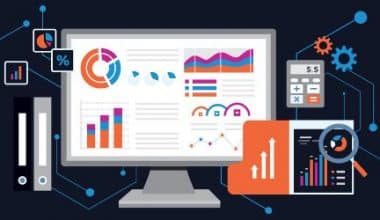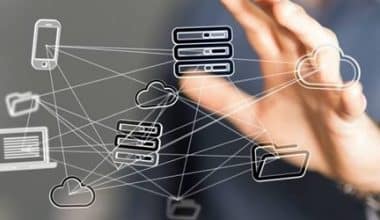The study and implementation of information systems used by businesses for data access, management, and analytics is known as management information systems (MIS). To be efficient, MIS must comprehend and meticulously sketch out company operations. Data must be precise and timely, and technology and software must be capable of storing and manipulating it.
The people who design, implement, and use an MIS determine how good it is. Here’s all you need to know about a management information system.
What Is a Management Information System (MIS)?
An MIS is a system that provides managers with the information they need to make operational choices for their organisations. The MIS collects and processes data from multiple sources to deliver information tailored to the needs of managers and their workforce.
Businesses use a variety of systems, but they all share the same objective: to provide managers with the data they need to make better decisions. Access to accurate and timely information is important for success in today’s fast-paced corporate climate. Managers can use MIS to track performance metrics, analyze trends, and make informed decisions about resource allocation.
The Significance Of Management Information Systems In Business
MISs provide firms with reliable data and robust analytical capabilities to quickly detect problems and opportunities and make appropriate decisions. A management information system should perform the following functions:
- Give you the information you need to make sound decisions.
- Can provide you with a competitive advantage by giving quick and accurate information
- Can assist you in increasing operational efficiency and productivity
- Keeps track of consumer activity and preferences.
- Allows you to create customized marketing campaigns and enhance customer service.
Computer Science vs. Management Information Systems
Although there is significant overlap between MIS and computer science, the two fields vary fundamentally in one key aspect: perspective. The study of how people utilize technology to manage information is known as management information systems (MIS). It covers the hardware as well as the software required to store, process, and retrieve data. The study of how computers work is known as computer science. It comprises computer system design and implementation.
Advantages of Having A Career In Management Information System
Here are some of the potential advantages of this career path:
#1. Demand for skilled people
With the internet of things (IoT), data science methods, artificial intelligence, and other new and developing technologies, the market for management information systems (MIS) specialists is expected to increase.
#2. Job satisfaction
Many MIS experts are pleased with their jobs. The reasons for such attractiveness include demanding work, the potential to be creative, and the opportunity to have a substantial impact on an organisation.
#3. The opportunity to be creative and innovative
As a MIS professional, you will most likely have the opportunity to be creative and innovative. You can create innovative ways to employ information technology to boost your organization’s efficiency and performance.
#4. Impact
MIS personnel have the opportunity to have a big impact on their organisations. Your efforts can assist in enhancing customer service, boosting sales, and cutting costs.
Types Of Management Information System
#1. Process management
Some management information systems oversee the multiple processes that make products in businesses that have production lines. A process control system keeps an eye on processes like the production of steel, processing of petroleum, and building of vehicles. The process control system continuously collects data throughout the product creation process in order to generate reports based on the system’s performance. If a process step is slower or faster than typical, the process control system can show the difference. Because manufacturing businesses host several processes at the same time, process control software is critical for product and performance regulation.
#2. Management reporting system
The management reporting system generates reports for business operations. Financial, operational, attendance, accident, and efficiency reports are examples of these. While a management reporting system does not handle every operation inside a system, it does assist in the management of chosen reports from other systems in order to streamline information to management staff. Multiple systems, for example, review a production company’s lines, attendance, and error reports. A management reporting system collects all reports from the three systems and converts them into information for management to review.
Managers can oversee a company’s activities using management reporting systems rather than gathering data from each department. Some businesses may even arrange a system separate from the management reporting system that generates a thorough, unique report for managers to review. Managers can analyze the company’s financial output, operational efficiency, and goal-achieving capacities using management reporting tools.
#3. Inventory management
Inventory control assists managers in keeping track of the present status of a department’s or company’s inventory. This allows managers to comprehend the impact of any potential spoilage, theft, or sale of inventory through a single report. This can assist purchasing managers in determining when to refill specific retail items. Inventory control can also assist in keeping track of inventory movements within the warehouse and telling management if all things arrive safely at sites.
If customers return things for any reason, an inventory control system can help demonstrate how frequently these returns occur. A management information system for inventory control is vital for efficiency and ongoing progress since a firm that manufactures goods for direct sales must inventory to assist maintain business.
#4. Sales and marketing systems
Managers can use sales and marketing systems to maintain track of a company’s sales and advertising efficiency. Marketing systems can generate data that assist managers in improving product quality through client reviews and feedback. They can also help managers better understand distribution networks by providing analytics that show which ones generate client replies. Marketing managers can use sales systems reports to understand more about predicted sales and compare them to present earnings. This can aid in their understanding of patterns and the development of remedies for future improvement.
Sales and marketing tools can also assist managers in tracking the performance of in-store advertising campaigns and where campaigns are in the rotation calendar. These systems can monitor pricing disparities within a product system as well as what discounts and advertising businesses are currently doing for specific products. This can assist managers in monitoring a product’s sales and directing additional discounts or promotions.
#5. Human resource management systems
Human resource systems enable HR managers to oversee the flow of information throughout the organization. The company system includes electronic devices such as company computers, phones, and other machines. HR administrators can use a human resource information management system to monitor the activities of supervisors, employees, and even contractors to help with day-to-day administration. Following recruitment, the HR staff monitors activity to verify that all workers adhere to business standards.
Payroll, employee benefits, and retirement money may also be tracked by a human resource system. It could aid in the management of communication requirements such as legal compliance notifications, training, HR-led meetings, and policy revisions. Work attendance, timesheets, and employee vacation or sick leave are also trackable things. Managers can also utilize this technology to aid in automated recruitment by scanning prospective resumes for essential details and informing the team if they fulfill particular criteria.
#6. Accounting and finance management systems
Accounting and finance systems assist managers in keeping track of a company’s investments or assets. Managers can use these systems to carry out tasks like payroll, federal law compliance, local taxes, pension funds, and state law adherence actions. Auditors can utilize these technologies to generate audit reports as well as annual reports for management. A financial and accounting system can also assist firms in managing daily transactions such as bank deposits, transfers, income, and returns.
Managers can better comprehend financial activity and plan for an influx or withdrawal of funds when the system administers these financial operations. All profit-and-loss statements and reports are also generated by the system as balance sheets. Accounting systems can be useful for tracking a firm’s financial health because balance sheets reveal the financial position of the company. A manager can use these records to encourage profit and departmental growth, as well as innovative financial methods.
#7. Decision support systems
Decision support systems gather information from both internal and external sources to assist managers in making business choices. Data from other departments, such as financial data, inventory data, or current sales margins during a quarter, are examples of internal sources. External data sources include industry trends, rates of interest or cost with other companies or suppliers. A decision support system can help a manager make decisions about building growth, setting annual work quotas, or developing new policies.
#8. Expert systems
Expert systems are algorithms that assist new employees in working with and designing concepts in a certain area. Professionals in a field may create expert systems to assist new employees, contractors, or other managers. They may even apply artificial intelligence to aid various employees based on their previous activities. For example, if an expert system for setting up a new employee’s email detects inactivity for an extended length of time, the system’s artificial intelligence may indicate a help button or other assistance tip.
#9. Executive information systems
Executive information systems immediately report firm data to executives. It can compile processing records, financial data, and corrective action summaries into an easy-to-read report. These executive information systems can present data in a variety of formats, such as summaries, graphs, charts, and spreadsheets. Employees who receive these reports can utilize them for comparative departmental study to find new ways to increase corporate efficiency.
#10. Transaction process system
Data is collected by transaction process systems during an organization’s daily transactional activity. Payroll and other company operations involving deposits can be automated using transaction systems. They can also keep track of other normal tasks, such as products in line or reservations for certain resources. Unlike financial systems, transaction systems are fully automated. Managers orchestrate transaction systems for procedures that are consistent, such as material that a department always uses or cash that are transferred between accounts on a monthly basis.
#11. School information management systems
School information management systems assist schools and colleges in efficiently managing daily activities. Many potentially automated procedures, such as attendance, payroll, and employee schedules, are handled by these systems. Teachers and administrative staff can focus on other productive activities while the management system conducts automated chores with school information systems. While programmers create school information management systems for academic purposes, they have many characteristics with financial and human resource management systems.
#12. Local databases
Local databases are community-managed information systems that serve the population of a given area. They may include company listings, public service offerings, social surveys, and public data. Local databases can be the most personalized of all management information systems kinds, as managers, mayors, or council members can design a system for many purposes. Managers may design local database systems to assist employees in managing database information such as employee profiles, training data, process reports, and overall staff management.
What Is A Human Resource Management Information System?
HRIS is an abbreviation for Human Resources Information System. The HRIS is a system that collects and stores information on an organization’s employees.
In most cases, an HRIS includes the fundamental functions required for end-to-end Human Resources Management (HRM). It’s a system for recruiting, performance management, learning and development, and other functions.
The HRIS can run on the company’s own technological infrastructure or, as is more typical nowadays, on the cloud. This means that the HR software is running outside of the company’s walls, making updates considerably easier.
HRIS Features
There are various types of HRIS systems and software. Because an HRIS includes all HR functionalities, all individual functionalities are included in the system. Among these features are:
#1. Applicant Tracking System (ATS).
This program takes care of all of the company’s recruiting needs. It keeps track of candidate information and resumes, enabling recruiters to match job opportunities to qualified individuals from the company’s application pool, and aids in the recruiting process.
#2. Payroll
Payroll automates the process of paying employees. Contractual data and information on new recruits are frequently entered into this system, which is occasionally linked with time and attendance data, and payments orders are generated at the end of the month.
#3. Administration of benefits
Another feature of the HRIS is benefit management. Employee benefits are an essential component of remuneration and are controlled in this system as well. For employee benefits, more advanced systems provide an employee self-service paradigm. In this instance, employees can pick and choose the perks they want. One may desire extra paternity leave, while the other may desire a more expensive company car. A cafeteria model is another term for this self-service approach to benefits.
#4. Attendance & Time.
This module collects employee time and attendance data. These are especially important for shift workers who clock in and out. Employees used to write down their working hours on a piece of paper back in the day. The manager would then manually enter the data into a time tracking system. Payment orders were prepared and distributed to all employees based on this information. Nowadays, employees frequently check in using their fingerprints or a card that is linked to an HRIS. This provides an accurate arrival and departure time. Any lateness issues are immediately identified.
#5. Training
When it comes to personnel management, learning and growth are critical components. This section enables HR to track employees’ qualifications, certification, and skills, as well as an explanation of available courses for corporate employees. When used independently, this module is referred to as an LMS, or Learning Management System. An LMS typically incorporates e-learning and other courses that employees must complete.
#6. Performance management
Performance management is an important aspect of people management. The employee’s immediate boss or peers generate performance ratings once or more per year.
#7. Planning for succession
Another critical component of an HRIS is the development of a talent pipeline and the availability of substitutes for important roles within the organization.
#8. Employee self-service
Employee self-service has been mentioned previously. Organizations are increasingly focusing on empowering employees and direct supervisors to manage their own data. Holiday requests can be made by the employee himself/herself. Following approval, these are immediately saved into the system (and registered for payroll and benefits tracking).
#9. Analytics and reporting
Reporting and analytics are a much rarer module in HRIS systems. Modern systems allow for the automated creation of HR reports on a variety of topics such as employee turnover, absence, performance, and more. Analytics is the process of analyzing these insights in order to make better decisions.
What Is The Function of MIS?
An MIS focuses on the managerial functions of planning, controlling, and monitoring, as well as decision-making. defining the sequence of the activities. Developing methods for communicating the plans to the organization’s employees.
What is The Role and Structure of MIS?
Operating elements, decision support, management activity, and organizational functions comprise the MIS structure. These approaches can be combined to form a single MIS structure with a physical and conceptual structure.
In Conclusion,
By making key information available quickly, computerized databases help departments such as sales, quality control, and human resources run more efficiently. A management information system helps to streamline information in databases so that it is useful and accessible to relevant employees. Understanding how departments across multiple businesses function can be aided by learning about multiple database systems.
- Marketing Information System: Best Practices &; All You Need
- INFORMATION SYSTEMS: Definition, Facts, Uses & Examples
- WHAT IS HRIS: What It Is, Benefits, and Uses
- MANAGEMENT INFORMATION SYSTEMS (MIS): Definition and All You Need To Know






